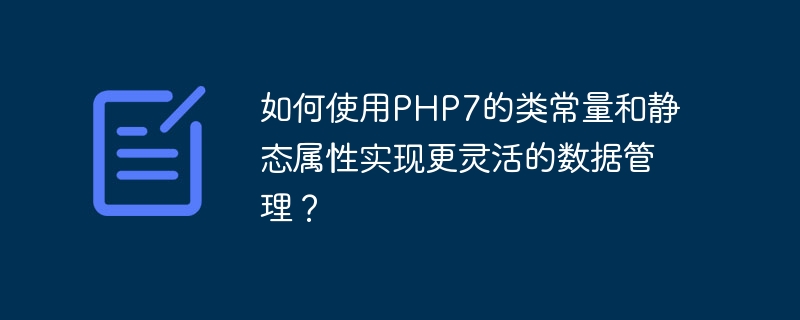

How to use PHP7’s class constants and static properties to achieve more flexible data management?
PHP is a scripting language widely used in web development, and in PHP7, many new features are introduced, including class constants and static properties. These two features provide a more flexible solution in terms of data management. This article will introduce how to use PHP7's class constants and static properties to achieve more flexible data management, and provide relevant code examples.
1. Class constants
Class constants refer to unchangeable values defined in the class definition. Unlike properties, class constants are public and accessible to all instances of the class. Using class constants can abstract some commonly used immutable values, making the code clearer and easier to maintain.
The following is a specific example:
class Circle {
const PI = 3.14;
private $radius;
public function __construct($radius) {
$this->radius = $radius;
}
public function getArea() {
return self::PI * $this->radius * $this->radius;
}
}
$circle = new Circle(5);
echo "圆的面积为:".$circle->getArea();In the above example, we define a Circle class, which contains a constant PI and a private property radius. By using self::PI in the getArea() method, you can use class constants to calculate the area of a circle. Using class constants can improve the readability and reusability of code, and you can also easily modify the value of the constant.
2. Static attributes
Static attributes refer to the attributes of a class, and the value of this attribute is shared among all class instances. Static properties can be used to share data between classes or store global information.
The following is a specific example:
class Counter {
private static $count = 0;
public function __construct() {
self::$count++;
}
public static function getCount() {
return self::$count;
}
}
$counter1 = new Counter();
$counter2 = new Counter();
$counter3 = new Counter();
echo "实例的个数为:".Counter::getCount();In the above example, we define a Counter class, which contains a static attribute count and a constructor. Every time an instance of the Counter class is created, the value of the static attribute count is increased by 1. By calling the static method getCount(), you can get the number of instances. By using static properties, data can be easily shared between classes and can be accessed without creating a class instance.
To sum up, PHP7’s class constants and static properties provide a more flexible way of data management. By rationally using class constants and static properties, the code can be made clearer, easier to maintain, and can easily share data or store global information. In actual development, you need to choose whether to use class constants and static properties based on specific needs.
The above is the detailed content of How to use PHP7's class constants and static properties to achieve more flexible data management?. For more information, please follow other related articles on the PHP Chinese website!